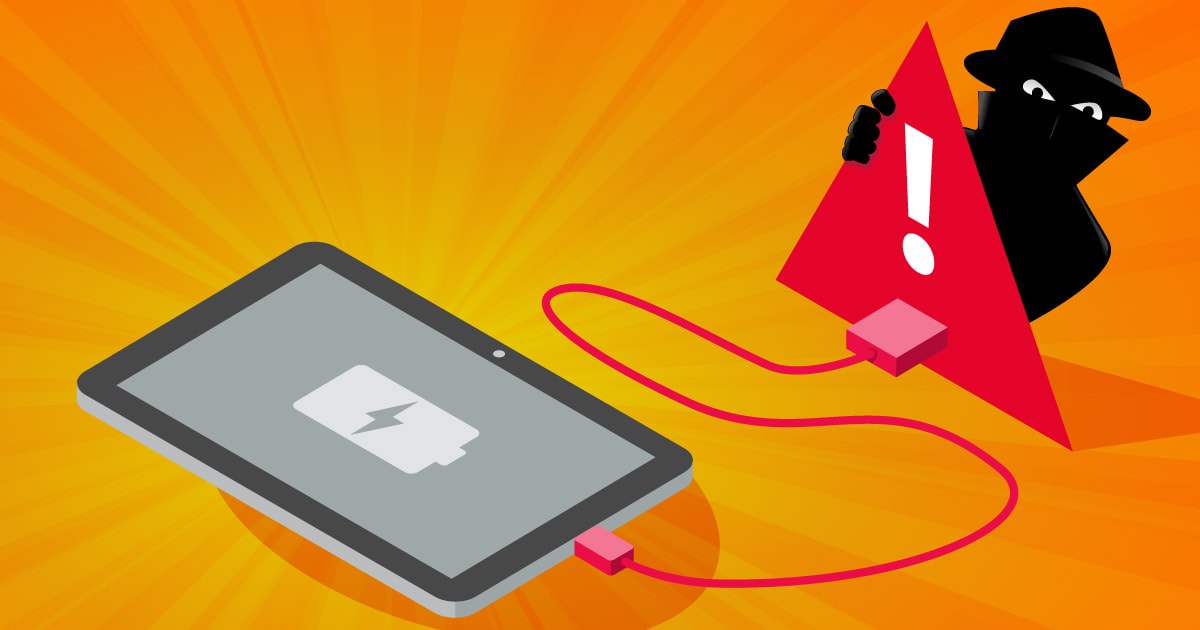
The holiday season is upon us and many of us are planning our travels. This season, be prepared to add some new items in your dos and don’ts. A vastly unknown threat to our mobile devices is “Juice Jacking”.
When your smartphone battery runs out and you're stuck somewhere, you might not hesitate to plug in at the nearby USB charging station.
Wait a minute. Juice jacking warnings can make you rethink your decision.
One of these public charging stations may have had malware installed on the USB port or the USB cord. A virus or other malware that can follow your keystrokes or even steal your data might be installed on your phone while it is charging.
Although juice jacking does not yet seem to be a common issue, it is still a good idea to be aware of your risks and available options before charging your battery at a public charging station, such as one found at an airport.
Smartphones all have the same feature: The power supply and data stream travel over the same wire, whether you have an iPhone, BlackBerry, or Android handset.
This might be problematic. Your phone establishes a trusted connection with the device it connects to by pairing with it. That implies that the gadgets can exchange data. Consequently, a cybercriminal may be able to access your device over the USB cord while it is being charged.
The connection is only visible on the end that supplies power, and on most phones the data transfer is deactivated by default (except from older Android smartphones).
For instance, a message on the computer may ask you whether to trust the device when you link your phone into it. Juice jacking prevents the device owner from seeing what the USB port is connected to. Therefore, if someone is checking on the other end when you connect in the phone, they might be able to transfer data from your device to theirs.
Data Theft: When a device is plugged into the public USB port, a cybercriminal could have compromised that port and enabled malware to infect your plugged-in device. This could potentially allow someone to steal the data on your mobile device.
Using a crawler program on your device, a cybercriminal could then search for personally identifiable information, account credentials, and financial information.
If the perpetrator can transfer that data onto their device, it might be enough personal information to impersonate you or access your financial accounts.
Malware Installation: Cybercriminals may use a malware app to clone your phone data and transfer it back to their own device. Other malware may help them gather data such as your GPS location, purchases, social media interactions, photos, and call logs.
Some types of malwares include adware, crypto miners, spyware, Trojans, or ransomware. Once your device is frozen or encrypted with one of these types of malware, the cyber-thief may demand payment to restore the information.

Avoid public charging stations or portable wall chargers:
Think ahead. Get into the practise of charging your phone when it's not in use at home, at work, or in the car.
If you must charge your phone, use a wall outlet:
At a standard AC wall plug, data cannot be transferred between your devices. Therefore, think about using a wall socket if you urgently need to charge while out in public. Additionally, if you're travelling, be sure you have the right adaptor before you go.
Use software security measures:
Always lock your phone to prevent pairing with other connected devices. The phone can also be turned off before charging, but the USB port might still be able to communicate with the device's flash storage. You can completely disable pairing if your iOS device has been jailbroken.
Choose a different method to charge your phone:
You have the choice of using external batteries, wireless charging devices, or power banks, which you can charge at home and take with you wherever you go. Most power banks are portable, flat, and lightweight.
Use USB pass-through devices:
These adapters allow power to flow through but disable the data pin on the USB charger. That means the device charges, but data won't transfer.